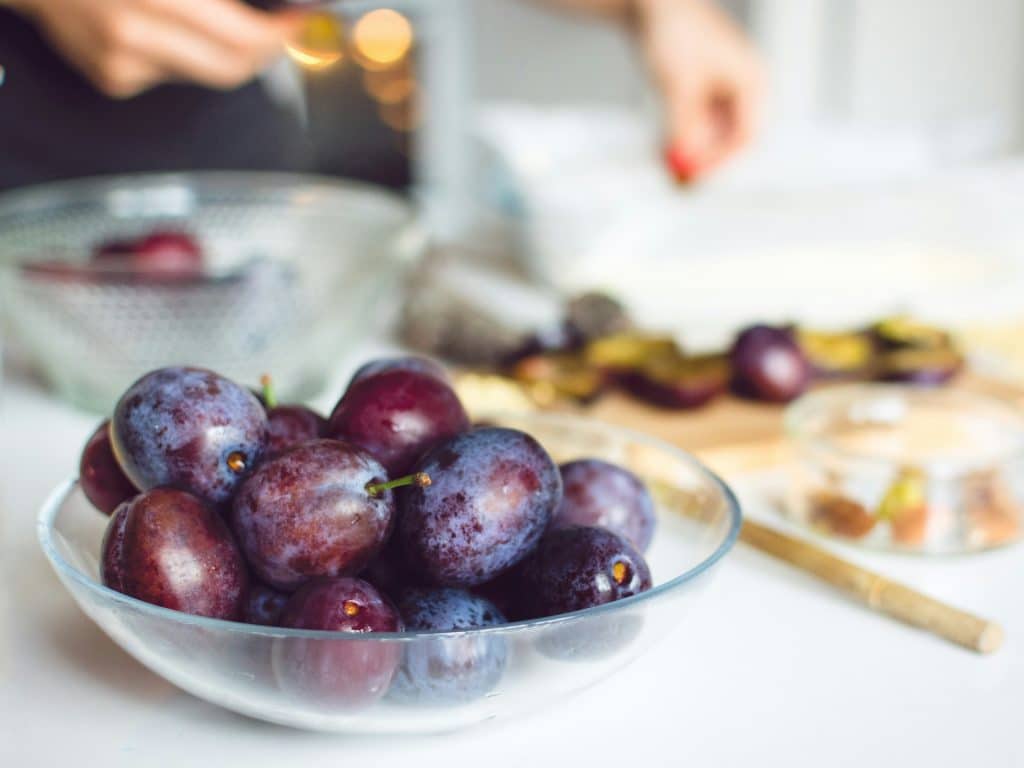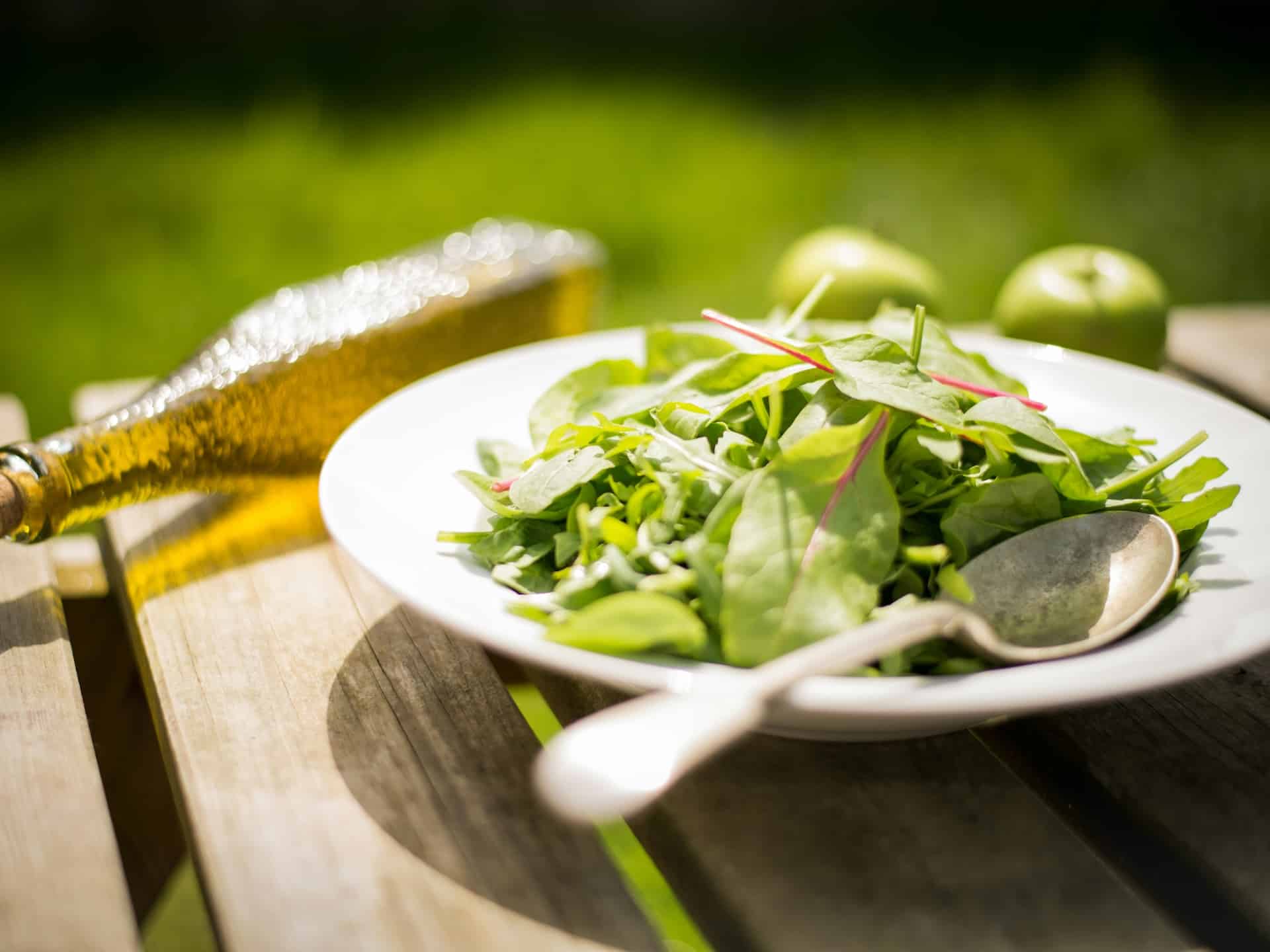
Constipation is one of the great digestive problems of our society. A sedentary lifestyle and stress are largely to blame, but it must also be attributed to the fact that we ingest little fiber. Although, as we are going to see, not all foods rich in fiber work the same to help us go to the bathroom. If we learn to Differentiate between soluble and insoluble fiberIt will be easier for us to choose foods for constipation. Or, rather, to combat constipation.
What is fiber?
Fiber, also known as dietary fiberThey are a set of carbohydrates that our body is not able to digest as it passes through the small intestine. That is, it does not provide us with energy or nutrients in the strict sense.
However, when this fiber reaches the large intestine or colon, the bacteria that live there (those of the intestinal microbiome) break it down, ferment it and feed on it. In this fermentation process, it is estimated that on average one gram of fiber provides about 2 kilocalories that are used as energy by our colon cells.
Traditionally it has been classified into two large groups: soluble or completely fermentable fiber, and insoluble or partially fermentable fiber. This differentiation, however, does not always predict the way in which dietary fiber acts in our body.
soluble fiber
It is composed of elements that dissolve in water and take the form of a viscous gel in the stomach and small intestine. When they reach the colonThey ferment and produce gases.
his presence slows down digestion and absorption of different nutrients in food. That is why it is recommended to eat foods with soluble fiber in case of diarrhea or when we go to the bathroom too frequently.
Another benefit of soluble fiber is that reduce the postprandial peak of glucose and insulin. To understand ourselves, slowing down the passage of glucose and cholesterol into the blood after eating, two very interesting factors to control hypercholesterolemia, type 2 diabetes or intolerance to glucose.
Vegetables usually have different proportions of soluble and insoluble fiber. The soluble one is present in oats and barley, part of root or bulb vegetables, such as carrots, turnips, and tubers, such as sweet potatoes. We also find it in fruits, such as apples, avocados, apricots, as well as beans, peas and legumes in general. Also, in seeds, such as flax, chia, psyllium… Precisely, the amount of soluble fiber in legumes contributes a lot to the gases produced by their intake.
insoluble fiber
Insoluble fiber does not dissolve in the large intestine, but rather passes through it without losing its original form, but retaining water and some nutrients.
Its function is to give mass and volume to feces, stimulate intestinal movements and facilitate its passage through the digestive tract. Foods with insoluble fiber are, therefore, anti-constipation foods.
We find it, above all, in whole grains, nuts, and in smaller quantities but also in some legumes such as lentils or chickpeas, seeds such as flax and fruits such as pear, red fruits and vegetables such as tomatoes or green beans.

How much fiber should you take per day
The EFSA A daily consumption of 25 grams is recommended for the adult population.
However, studies reveal that the Spanish consumption It is around 19 in men and 17 in women, clearly below what is recommended. Poor fiber intake is associated not only with constipation, but with metabolic alterations, such as cardiovascular diseases, diabetes or colon cancer.
The recommended daily amount is difficult to achieve by eating only fruits and vegetables. For this reason, dietitians-nutritionists insist on the need to frequently supplement with whole grains, legumes and nuts.

List of foods rich in fiber good for constipation
Rather than considering making foods with fiber, we should consider including foods with a lot of insoluble fiber in our regular diet. To avoid the ‘plug effect’ that would be caused by suddenly incorporating many foods with fiber to go to the bathroom, dieticians-nutritionists advise incorporating them into the diet progressively and not forgetting to drink enough water.
oat flakes
Oats are rich in soluble and insoluble fiber (10.6 grams per 100 grams). It is easy to add to the diet in smoothies, porridge, salads, homemade cookies…
wheat bran
41.8% of wheat bran is fiber. Above all, insoluble fiber, which helps us go to the bathroom regularly and without having a hard time. A home remedy against constipation is to add a tablespoon of bran to yogurt, fruit or salads.
Kiwi
Kiwi provides 1.9 grams of fiber per 100 grams, but in general all fruits are a source of fiber. In cases of constipation, kiwi is one of the great allies. It has the advantage that it is very easy to eat, both by spoonfuls and added in pieces to yogurt.
Orange, mandarin and fruits in general.
The orange provides 2 grams and the tangerine, 1.9 grams per 100 grams of food. This contribution is only maintained when we eat them raw, not in juice if we eliminate the pulp.
plums
The plum with skin provides 2.3 grams of fiber and 2.1, without skin (always per 100 grams). It is one of the fruits that provides the most fiber and has the advantage of being present all year round in its dehydrated form. Eating prunes often is a good way to stay away from constipation. In fact, they are one of the few foods that have a health claim authorized, which, as it could not be otherwise, is related to their contribution to function. normal intestine.
Chia, flax and psyllium seeds
These seeds and others, such as pumpkin, sunflower or sesame seeds, contain fiber capable of absorbing a lot of water. Thanks to this liquid, they form a gelatinous mass that softens the stool and makes it easier to evacuate.
Walnuts
Walnuts provide 5.2 grams of fiber per 100 grams, much of which is insoluble fiber, but all nuts (almonds, hazelnuts, etc.) are rich in fiber. This promotes more efficient digestion and can relieve constipation.
spinach
Spinach not only provides 2.9 grams of fiber per 100 grams. In addition, it contains 90.7% water, a fabulous contribution to prevent stools from hardening. We must not forget that good intestinal hydration is key to maintaining regular transit and preventing constipation. All vegetables are a source of fiber.
breakfast cereals
Breakfast cereals, as long as they are whole grain and do not contain added sugar, are an excellent source of insoluble fiber. It is an easy food to combine with yogurt (probiotics beneficial for the microbiome) and with fruits rich in fiber, such as plums or bananas (3.4 grams). Whole wheat bread is also an ally to provide fiber at breakfast, without having to resort to other more processed preparations.
chickpea
Cooked chickpeas provide 13.6 grams of fiber – soluble and insoluble – per 100 grams. Perfect to eat in stews or in salads, hummus and many other vegetable dishes.
In general, all legumes are rich in fiber.
The ALDI Council
Maintaining a regular level of physical activity helps to regularize intestinal transit. Run, play basketball, play a game of paddle tennis… Get active!







